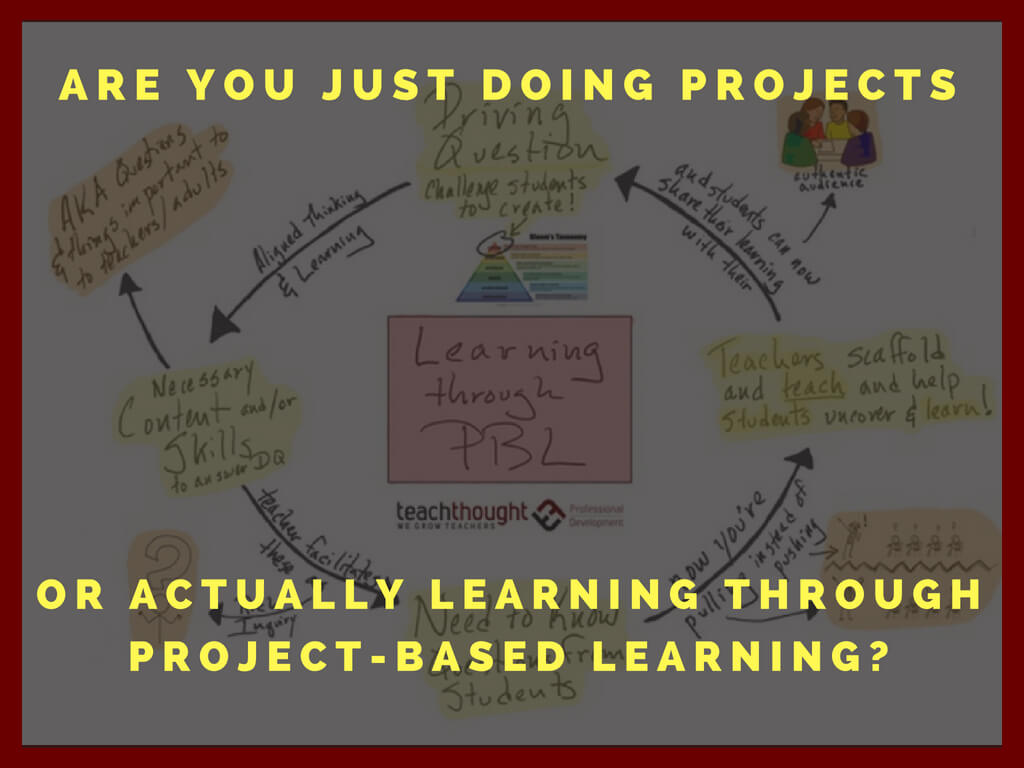
Are You Doing Projects Or Learning Through Project-Based Learning?
contributed by Drew Perkins
Project-based learning is not just doing projects, it’s students learning through the work of a project.
In quality PBL the deeper connections and learning are established through the inquiry process as students make meaning out of an authentic challenge. By starting them at ‘create’ on Bloom’s Taxonomy, we can then help them uncover the ‘remember’ and ‘understand’ pieces and grow those things as they analyze, apply, and evaluate.
One of the more powerful shifts and a-ha moments that can occur for teachers as they start their journey using project-based learning is realizing the potential of the Need to Know list. Understanding and taking advantage of the pedagogical relationship between the Driving Question and Need to Knows is key to getting the most out of PBL. It’s this process that helps us shift from a push to a pull dynamic of teaching.
Instead of telling students what they need to know (learning targets or ‘I can’ statements), help them identify the content and skills necessary to answer the challenge of the Driving Question as Need to Know questions. Aligning the thinking and learning (those things important to you as a teacher) as things they’ll need to know for a challenge important to them helps establish a ‘why.’
That helps move from a culture of compliance to commitment and also helps them experience thinking like a content area expert in a way that can help them solve problems throughout their lives.
See also 8 Strategies To Help Students As Great Questions
4 Questions To Consider During PBL Planning
When designing your project it can be helpful to think, or even practice with someone, about how you’re going to facilitate drawing out those necessary learning pieces and get them on your Need to Know list.
- Will you use groups to discuss and generate questions?
- Will you have them engage in a protocol like the QFT?
- When will you need certain content or skills to show up on that Need to Know list?
- How and when will you help students realize some of their Need to Know questions aren’t actually necessary?
Facilitation of inquiry is one of those ‘art of teaching’ practices that takes real skill and it’s usually not enough to just present the Driving Question and ask “hey, what do we need to know?”

Learning through PBL takes solid design work that might be characterized as the ‘science of teaching.’ The architecture of a project should be intentional but flexible in a way that allows you to demonstrate your teaching artistry and lead your learners through the cognitive terrain you planned for as well as some you didn’t.
I sometimes joke that quality PBL isn’t akin to ‘free range chicken.’ Quite the contrary, we want to be purposeful in our design so that learners are working with the content and skills in multiple ways that connect back to the Driving Question.
It’s that sort of PBL professionalism that produces craftsmanlike work and thinking in the culminating phases where students are sharing their learning with authentic audiences.
